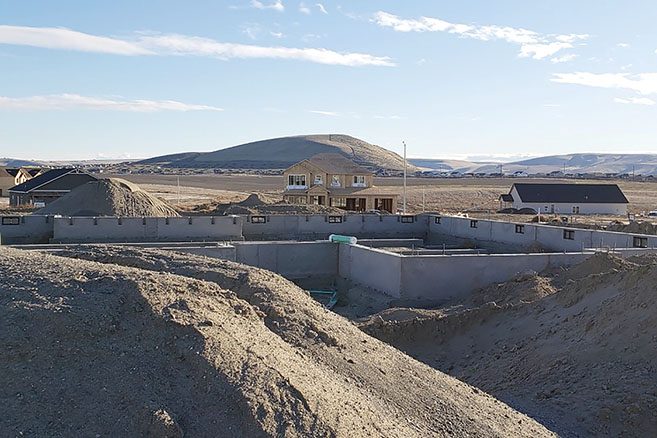
Home » Homebuilders race to match Tri-City growth
Homebuilders race to match Tri-City growth

February 18, 2020
Tri-City building
agencies issued a record 1,655 permits for single-family homes in 2019, an 18
percent gain in just a year.
Predictably, fast-growing
Pasco led the market with 585 permits, followed by Richland at 371, Kennewick
at 342 and West Richland at 122, according to year-end figures compiled by the
Home Builders Association of Tri-Cities.
Between 2014-19,
homebuilders secured permits for more than 8,000 homes and the pace of
development grew by nearly 60 percent.
But is it enough to keep
up with demand sparked by low unemployment, low interest rates and an economy
that has added a staggering 47,500 jobs since the year 2000?
Pasco permitted 100 more
homes in 2019 than the year prior, a 21 percent gain. Since 2014, the city has
permitted nearly 2,400 new single-family homes.
It’s a healthy figure,
but Rick White, director of planning and community development, said new
construction isn’t occurring in the “affordable” range, generally $300,000 and
below.
It’s not an idle
question. Pasco expects to grow to 124,000 people by 2040, a gain of roughly
50,000 people in just 20 years.
“Are we building enough?
I can’t answer that. But inventory is low and apartment vacancies are basically
nonexistent,” he said.
Growing population
The population of Benton
and Franklin counties stood at nearly 300,000 in a 2018 population estimate by
the Census, 36,000 more than 2010.
During that time, the
Tri-Cities added about 1,750 households per year, growing to 103,500, according
to a 2018 housing market analysis conducted by the federal Department of
Housing and Urban Development.
For buyers, that means
there are about 500 to 600 homes for sale at any given time, about three
months’ worth. Historically, the market was considered healthy when the
inventory hovered around 1,200.
Still, buyers purchased
4,153 homes in 2019 on an average of 12.5 homes per day. That’s almost one more
house per day than five years earlier, according to figures compiled by the
Tri-City Association of Realtors.
Jeff Losey, president of
the home builders association, expects the homebuilding industry to boom again
in 2020.
The year is already off
to a better start than 2019, when February snow slowed the start of the
construction season and the uncertainty caused by trade wars and tariffs on
Washington-produced agricultural goods injected uncertainty into the economy.
The trade wars have eased,
and the winter has been mild as of early February. If it continues, Losey said
2020 should be a repeat of 2019 or better.
“We’re benefiting from
the economic opportunities that everyone else is having,” he said. “Interest
rates are low and stable. That keeps buyers making purchases.”
Rising prices for
land, homes
John Kelch, managing
broker for Windermere One Tri-Cities, is the 2020 chair of the Tri-City
Association of Realtors. New construction accounted for 25 percent of home
sales in 2019. In the pre-recession years, it topped out at about 30 percent.
Kelch anticipates it will
remain at the 25 percent level. Developable land is in short supply, which has
driven lot prices to more than $100,000. That doesn’t help build the $250,000
to $300,000 homes considered affordable.
Indeed, the median price
of a home in the Tri-Cities rose to $300,000 in 2019, from $275,000 the year
before.
“As land becomes
available, it’s getting built on,” Kelch said.
In a tight market, Kelch
advises sellers to price their homes appropriately and buyers to be patient and
ready to act when they find the right property, whether it is new or not.
Tax base bump
2019 wasn’t just a
marquee year for homebuilding.
All construction was up.
In all, builders pulled permits for projects with a combined value of more than
$1.1 billion — $486 million for single-family homes and $700 million for all
others, including commercial, renovations and so forth.
It’s the first time the
Tri-Cities topped $1 billion in construction value since at least 2004,
according to Losey, who checked the home builders association’s records. Ten
figures is a big deal, he said.
“It means that it was a
very good year for the Tri-Cities from an economic perspective,” he said.
Benton County’s total
assessed value for tax purposes is $22.8 billion, and Franklin County’s is $9.3
billion.
Real Estate & Construction Local News
KEYWORDS february 2020





